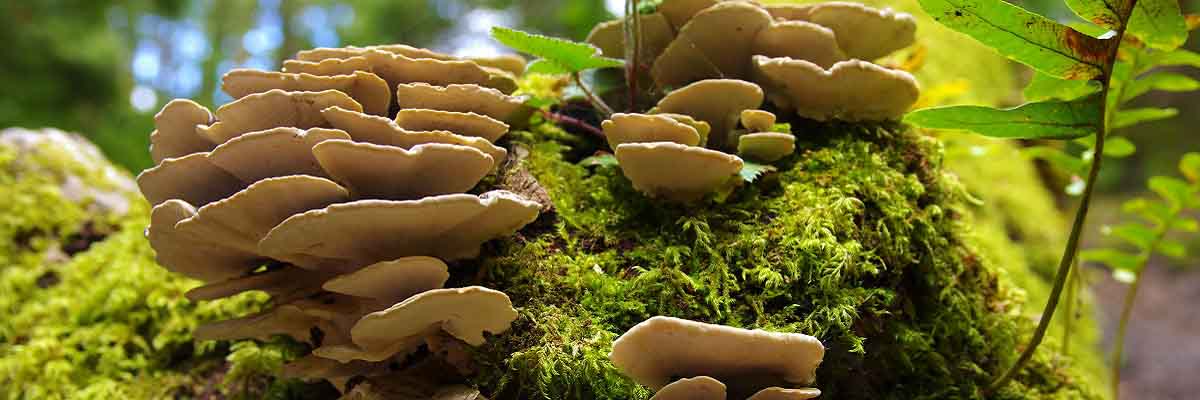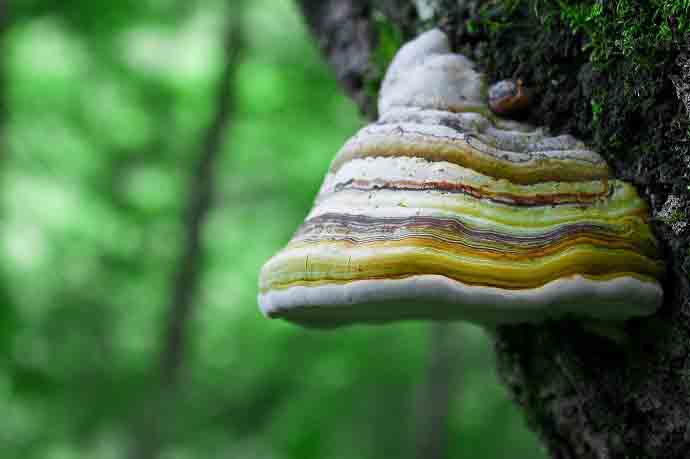Fungi: Natures Greatest Decomposers

Fungi are eukaryotic microorganisms. They may exist as either yeast or a mold and may alternate between these forms as dictated by environmental conditions. Fungi can occur as yeasts, molds, or as a combination of both forms. Yeasts are fungi that grow as solitary cells that reproduce by budding. Molds are characterized by the development of hyphae resulting in the colony characteristics. Some fungi can cause superficial, cutaneous, subcutaneous, systemic or allergic diseases Fungi are all heterotrophic and digest their food externally by releasing hydrolytic enzymes into their immediate surroundings (absorptive nutrition). This is regardless of their shape or size. These microorganisms can be found on almost any surface on the planet. It is estimated that there are almost one million or more species of these single organisms; about one hundred of which can be found in or on the human body.
Mold Growth
Mold does occur in the soil, in trees, and in plants. Mold reproduction happens rapidly in the presence of organic matter from spores which are believed to be airborne reproductive particles of mold. No environment can be 100% spore free. Increased concentrations of spores in the environment can cause extreme allergic, even toxic reactions in those who are highly sensitive to molds.
Spores can grow on an organic substance like drywall, carpet, or wood; and moisture within human habitation. In such areas, moisture forms in places with high humidity, poor ventilation, or rain damage making a favorable environment for the growth of spores. Branches, called hyphae begin to form, extending into a network of hyphae called mycelium. The mycelium is the colony of mold that is visible to the naked eye, appearing fuzzy with colors ranging from white to grey to black. Some molds may even appear green or blue in color.
Importance of Fungi
The majority of fungi are very important to the environment as well as to the general wellbeing of mankind. However, others have quite some adverse impacts too. Fungi play a key role in decomposition. They play a key part in the formation of healthy soil and plant growth. Beneath layers of dead leaves, grass, and straw lie miles and miles of mycelial colonies in the soil.
The mold help in the breaking down and decomposition of organic matter forming a rich nutrient substrate in the soil by excretion into the soil of the consumed matter creating organic compost.
The benefit from a symbiotic relationship, over the ages, with fungi and other plants, is estimated to be around 85-90% of plant life, especially trees. Mycorrhiza is the most common type of beneficial fungi found in soil. This fungus gain from tree and plant roots by feeding off the organic matter it produces and receiving carbon from the decomposed matter. The plant roots then receive the nutrients broken down and returned to the soil by mycorrhizae and further aids in the roots’ ability to absorb nutrients and water while creating an internetwork system between the roots and soil.
The presence of mushrooms growth on the soil is usually an indicator of healthy soil. Mushrooms have their roots in fungal mycelia and do occur in diverse species with a majority of these being beneficial to the environment. Mushrooms can also be added to compost as a source of fungal growth in new grows beds. The occurrence of mushrooms in one’s garden should be perceived as a positive sign and their growth should not be interfered with. The only exception should be in the case where small children or pets might have the risk of accidentally consuming resulting in toxic reactions.
Some species of mushrooms, namely the oyster mushroom, and their mycelia are known for their ability to break down toxins present in soil and water and to filter out unhealthy components therein, including pesticides and e.coli. These mushrooms have been used to aid in the cleanup of oil spill sites because their properties can break down oil and petroleum. They can also eliminate dioxins and nerve gas toxins.
For years, fungi and mold have been closely evaluated for their medicinal properties. The psilocybe species are also well known. The infamous Penicillium chrysogenum species is the bacterium that creates the antibiotics penicillin, amoxicillin, and ampicillin. First discovered in Europe, but developed in the US, Penicillium chrysogenum is found in many fruit and cheese, but the most effective strains are found in the cantaloupe. This fungus, is the godfather of antibiotic development and use in human medicine.
The genus of mushroom psilocybe contains the psychoactive component psilocybin. Today, psilocybin is being observed by scientists and mycologists for it’s medicinal properties. Studies show that a synthesized, less psycho-inductive version of this drug may be effective in the treatment of anxiety and stress in cancer patients undergoing chemotherapy. Other types of fungi and mushrooms are considered very healthy for human consumption, such as the fungus found in cheeses like brie, blue cheese, gorgonzola, and Roquefort. Yogurt is a probiotic, contains life, activated yeast and bacteria.
Vegan products such as Tempeh, a soybean product, are infused with the fungus rhizopus oligosporus, and is considered an excellent source of fiber and protein. The soybean is fermented in water and the fungi, allowing rhizopus oligosporus to completely invade and bind the beans firmly together. Quorn is a product very similar to tempeh, made by binding egg albumen with the fungi fusarium venenatum. It holds similar nutritional properties as tempeh, and is used as a meat substitute. Mushrooms are a good source of vitamin D. Common edible mushrooms include button white, shiitake, cremini, and portobello mushrooms; which are mature cremini. These mushrooms can be found in the wild, but are also grown in special, environmentally controlled indoor and underground farms. Other coveted wild mushrooms include chanterelle, pink-tipped coral, porcini, morel, and truffles.
Mushrooms Toxicity
The consumption of toxic mushrooms can have adverse health effects on man and animals. Mushroom toxicity can be characterized by symptoms that range from mild gastrointestinal discomfort, vomiting, diarrhea, fever, excessive salivation, respiratory distress or failure, kidney and liver damage or failure, hallucinations, and death. It takes about 5-24 hours after consumption for one to develop the symptoms. Immediate medical help should be sought in the event where a person or pet is suspected of eating wild mushrooms.
Negative Impact of Fungi
Fungal infestations cause an estimated 20 billion dollars in damage to US farmers every year. Smut fungi, powdery mildew, and fusarium blight are among the most common crop invaders, causing damage to produce and farmers. Fungi can also invade the human body internally and externally, causing mild skin irritation and even deadly internal infection.

The Future with Fungi
The chemical composition found in these organisms is continuously being studied widely by scientists, biologists, and mycologist to discover how their components may be manipulated to create environmentally safe fungicides and pesticides.
Scientists dealing with mycology are studying impacts of the interaction between different fungi. It’s believed and hoped that in the fight of good fungi versus bad fungi, the more beneficial species will overcome and consume the detrimental species. Some types of fungi and mold will even grow within and consume insects, organically breaking them down from the inside out and leaving them a fuzzy pile of mold. Mycologists are using this knowledge to create environmentally safe fungicides called Biocontrols. These biocontrols will ideally eliminate the need for chemical dependency in warding off these enemy fungi and insect pests thereby advancing organic agriculture and boosting human health.
Through history, fungi and molds have proven to be beneficial and detrimental in many areas. Today, scientists are digging deeper into the components and chemistry of these organisms, discovering new ways to use them to our advantage. One of the biggest tests of fungi’s potential environmental impacts in recent years is its ability to create a sustainable source of fuel.
Mycologists are studying how some species of fungi, especially Trichoderma reesie, break down cellulose found in wood chips and switchgrass into simple sugars; sugars which can easily be converted into ethanol.
All in all, fungi and molds are on the front lines of environmental ingenuity. From the beginning of time, these ancient organisms have nurtured the earth and its inhabitants, equally balancing the decomposition and breakdown of old things and using their remains to create things of new. The wisdom of Mother Nature always guides us home to a pure, clean, organic way of life.
To start your journey to becoming a professional, organic mushroom grower, please visit – Mushroom Growing For You
Source
http://www.ncbi.nlm.nih.gov/books/NBK8125/